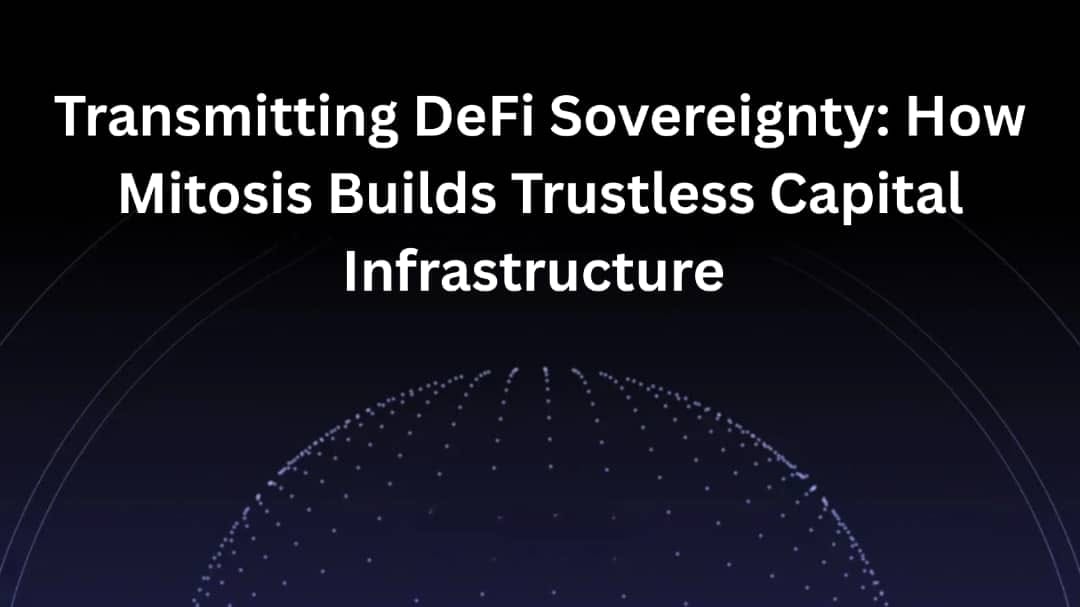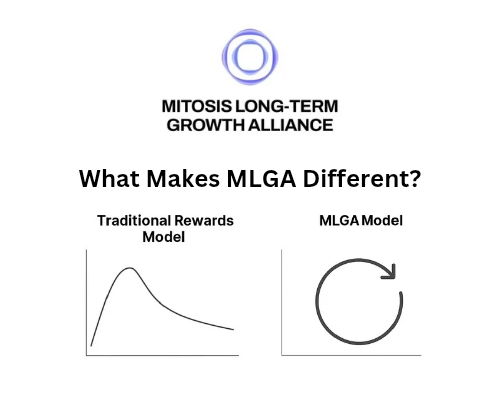Transmitting DeFi Sovereignty: How Mitosis Builds Trustless Capital Infrastructure

Introduction
Decentralized Finance (DeFi) has emerged as a revolutionary force in the financial landscape, offering unprecedented opportunities for individuals to engage in financial activities without intermediaries. However, as the DeFi ecosystem has evolved, it has also faced significant challenges, particularly in the realm of tokenomics. Many projects have adopted rent-seeking behaviors, prioritizing short-term profits over long-term sustainability and community welfare. Mitosis aims to address these issues by proposing a new framework for DeFi that emphasizes programmable, community-governed liquidity. This article delves into Mitosis's manifesto, exploring how it seeks to realign DeFi from its current trajectory towards a more equitable and trustless capital infrastructure.
1. Understanding the Current State of DeFi
1.1 The Rise of DeFi
DeFi has gained traction over the past few years, with platforms enabling users to lend, borrow, trade, and earn interest on their assets without relying on traditional financial institutions. The total value locked (TVL) in DeFi protocols has skyrocketed, reaching tens of billions of dollars. However, this rapid growth has also led to the emergence of various challenges, including:
- Rent-Seeking Tokenomics: Many DeFi projects have adopted tokenomics models that prioritize profit extraction from users rather than creating value for the community. This often results in unsustainable practices that can lead to market volatility and user distrust.
- Centralization Risks: Despite the promise of decentralization, many DeFi platforms are still governed by a small group of stakeholders, leading to centralization of power and decision-making.
- Lack of Transparency: Users often lack insight into the mechanisms driving DeFi protocols, making it difficult to assess risks and make informed decisions.
1.2 The Need for Change
To address these challenges, there is a pressing need for a paradigm shift in DeFi. This shift must focus on creating a more equitable and transparent ecosystem that empowers users and fosters long-term sustainability. Mitosis proposes a solution that centers around the principles of trustless capital infrastructure and community governance.
2. Mitosis's Vision for DeFi
2.1 The Concept of Mitosis
Mitosis draws inspiration from biological processes, where cells divide to create new life forms. In the context of DeFi, Mitosis represents the idea of breaking down existing structures to create a more resilient and adaptable ecosystem. This involves rethinking how liquidity is generated, governed, and utilized within DeFi protocols.
2.2 Key Principles of Mitosis
- Programmable Liquidity: Mitosis advocates for liquidity that can be programmed to respond to market conditions and user needs. This involves creating smart contracts that automatically adjust liquidity parameters based on predefined criteria, ensuring that liquidity is always available when needed.
- Community Governance: Mitosis emphasizes the importance of community involvement in decision-making processes. By implementing decentralized governance models, users can have a say in how protocols are developed and managed, fostering a sense of ownership and accountability.
- Transparency and Trust: Mitosis aims to enhance transparency within DeFi protocols by providing users with clear insights into how liquidity is generated and utilized. This includes open-source code, regular audits, and accessible documentation.
- Sustainability: The Mitosis framework prioritizes long-term sustainability over short-term gains. By aligning incentives with community welfare, Mitosis seeks to create a DeFi ecosystem that benefits all participants.
3. Building Trustless Capital Infrastructure
3.1 The Role of Smart Contracts
At the heart of Mitosis's approach is the use of smart contracts to automate and enforce liquidity management. Smart contracts can be programmed to execute specific actions based on predefined conditions, eliminating the need for intermediaries and reducing the risk of human error. This trustless mechanism ensures that users can engage with DeFi protocols with confidence, knowing that the rules are transparent and immutable.
3.2 Dynamic Liquidity Pools
Mitosis proposes the creation of dynamic liquidity pools that can adapt to changing market conditions. Unlike traditional liquidity pools, which often suffer from impermanent loss and inefficiencies, dynamic pools can adjust their parameters in real-time. For example, if a particular asset experiences high volatility, the liquidity pool can automatically reallocate resources to mitigate risks and protect users' investments.
3.3 Incentivizing Participation
To encourage community participation, Mitosis introduces innovative incentive structures that reward users for contributing to liquidity and governance. This could include token rewards for providing liquidity, participating in governance votes, or engaging in educational initiatives. By aligning incentives with community goals, Mitosis aims to create a more engaged and active user base.
4. Case Studies: Mitosis in Action
Example 1: Community-Governed Liquidity Pools
One of the first implementations of Mitosis's principles can be seen in community-governed liquidity pools. These pools allow users to collectively decide on liquidity parameters, such as fees, rewards, and asset allocations. By giving users a voice in the decision-making process, Mitosis fosters a sense of ownership and accountability, leading to more sustainable outcomes.
Example 2: Programmable Liquidity Solutions
Mitosis has also developed programmable liquidity solutions that enable users to customize their liquidity experiences. For instance, users can set specific conditions under which their liquidity is deployed, such as price thresholds or market trends. This level of customization empowers users to manage their risks effectively and optimize their returns.
5. Overcoming Challenges in DeFi
1. Addressing Security Concerns
Security is a paramount concern in the DeFi space, with numerous high-profile hacks and exploits raising questions about the safety of user funds. Mitosis addresses these concerns by implementing rigorous security measures, including regular audits, bug bounties, and community-driven security initiatives. By prioritizing security, Mitosis aims to build trust and confidence among users.
2. Navigating Regulatory Landscapes
As DeFi continues to grow, regulatory scrutiny is likely to increase. Mitosis recognizes the importance of compliance and actively engages with regulators to ensure that its protocols align with legal requirements. By fostering a collaborative relationship with regulatory bodies, Mitosis aims to create a compliant and sustainable DeFi ecosystem.
6. The Future of DeFi with Mitosis
6.1 A New Era of Financial Sovereignty
Mitosis envisions a future where individuals have complete control over their financial assets, free from the constraints of traditional financial systems. By promoting trustless capital infrastructure and community governance, Mitosis aims to empower users to take charge of their financial destinies.
6.2 Expanding Access to Financial Services
One of the core tenets of Mitosis is to expand access to financial services for underserved populations. By leveraging blockchain technology and decentralized protocols, Mitosis seeks to create inclusive financial systems that cater to individuals who have been excluded from traditional banking services.
6.3 Fostering Innovation and Collaboration
Mitosis encourages innovation and collaboration within the DeFi space. By providing a framework for developers and entrepreneurs to build upon, Mitosis aims to create a vibrant ecosystem that fosters creativity and experimentation. This collaborative approach will drive the evolution of DeFi, leading to new solutions and opportunities for users.
Conclusion
Mitosis represents a bold vision for the future of decentralized finance, one that prioritizes trustless capital infrastructure, community governance, and sustainable practices. By realigning DeFi from rent-seeking tokenomics to a model that empowers users, Mitosis aims to create a more equitable and transparent financial ecosystem. As the DeFi landscape continues to evolve, the principles outlined in Mitosis's manifesto will play a crucial role in shaping the future of finance.

Comments ()